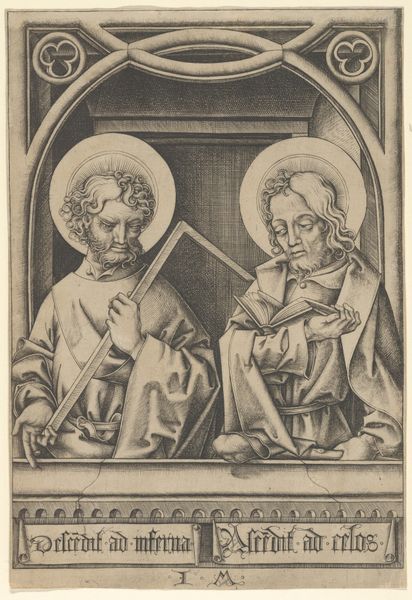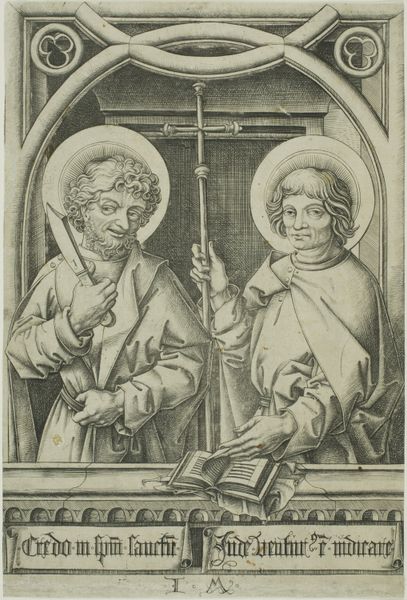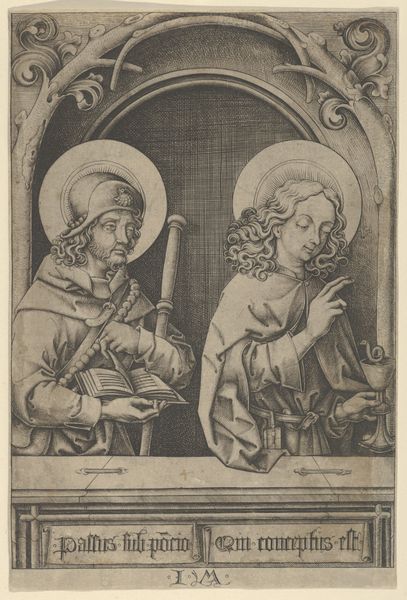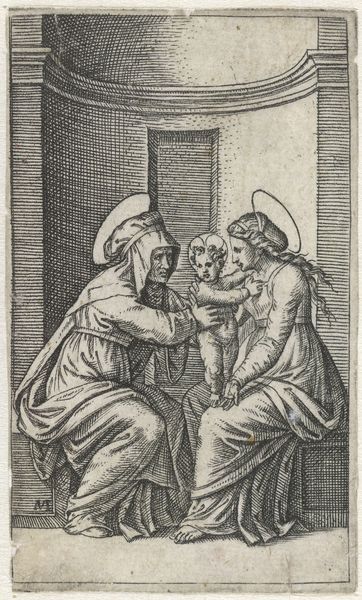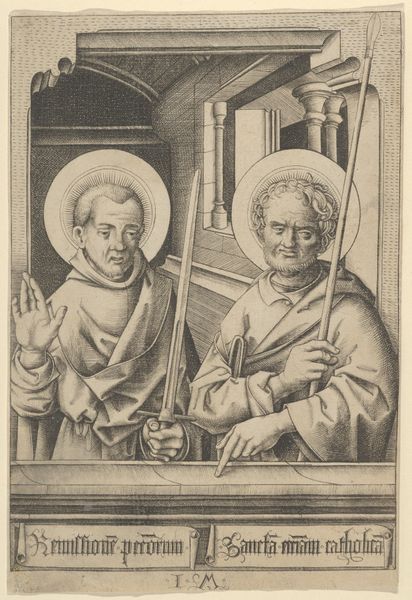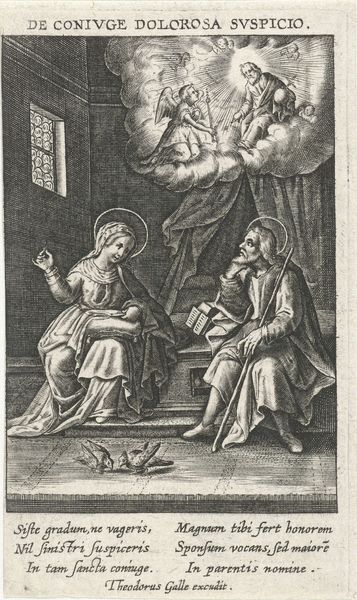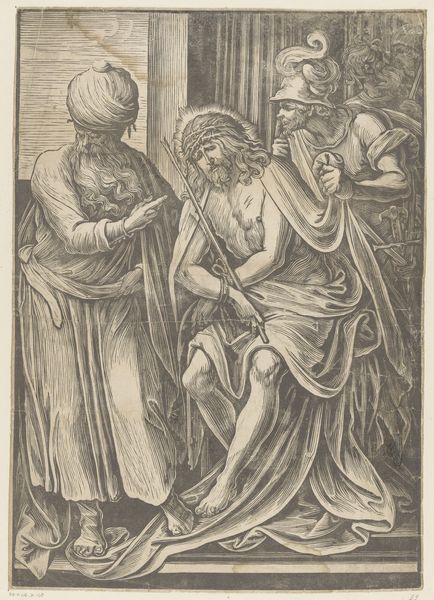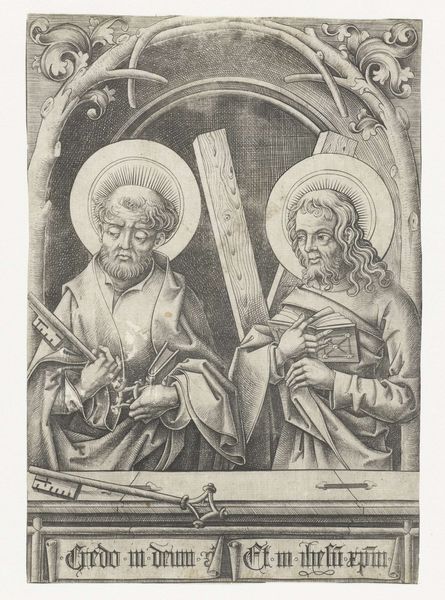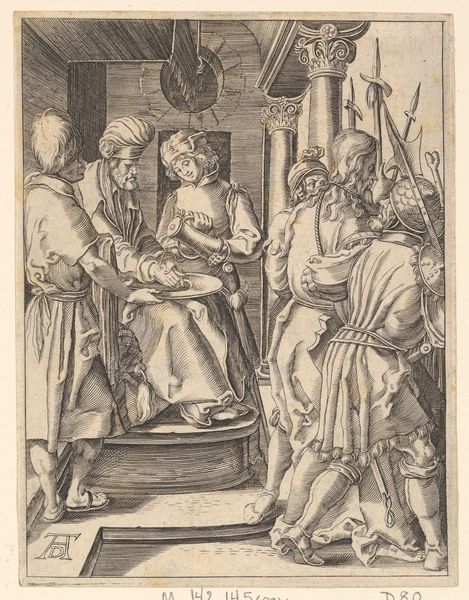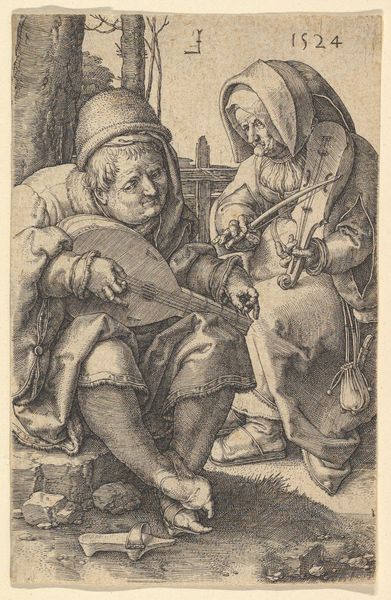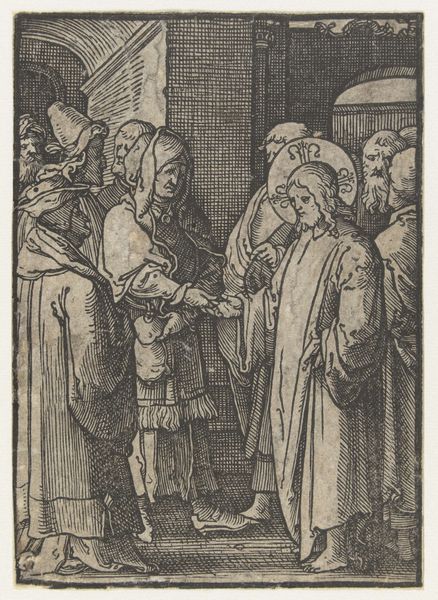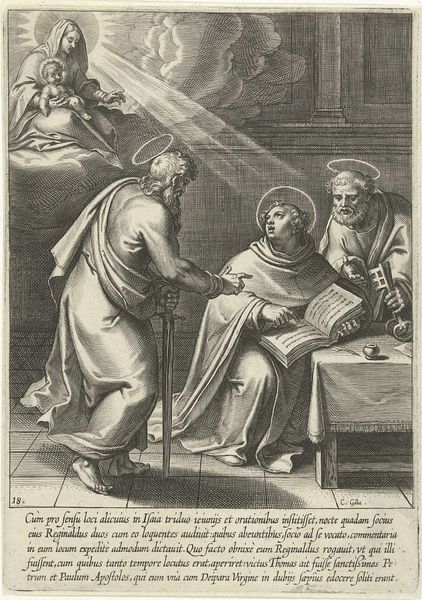
Saints Matthias and Judas Thaddaeus, from The Apostles 1435 - 1503
0:00
0:00
drawing, print
#
pencil drawn
#
drawing
#
aged paper
#
toned paper
#
weapon
#
mechanical pen drawing
# print
#
book
#
pencil sketch
#
old engraving style
#
personal sketchbook
#
pen-ink sketch
#
portrait drawing
#
pencil art
Dimensions: Sheet: 5 13/16 × 8 7/16 in. (14.7 × 21.4 cm)
Copyright: Public Domain
Curator: This engraving, "Saints Matthias and Judas Thaddaeus, from The Apostles," created between 1435 and 1503, comes to us from the hand of Israhel van Meckenem. Look closely at the detail he achieves with line. Editor: It strikes me immediately as… intense. The contrast between the aged, almost weary expression of Matthias reading and the sharper, more assertive presence of Thaddaeus with his saw is very compelling. Curator: Compelling, yes, and carefully constructed. Each saint is given specific attributes for identification, a way of locating them within the broader narrative of Christianity. Editor: Right, Matthias with his axe—a tool used for his martyrdom. It's not just about identifying him, though; it speaks to a larger pattern of systemic violence imposed by religious hegemony. Thaddaeus has his saw. Why? Curator: Traditionally, Judas Thaddaeus is recognized by the fuller’s club but during the late Middle Ages this symbol changed to the axe, then finally the saw to which you refer. Some versions of the story describe his death involving this very saw. These items serve not just as identifiers but also as conduits to contemplate themes of faith, sacrifice, and martyrdom. Editor: I see the symbols speaking of more than passive suffering. It is fascinating, the capacity of these items—almost instruments of labor—to function as symbols of strength and sacrifice under duress. The lines are incredibly crisp. The use of hatching gives volume and definition. Curator: It demonstrates a remarkable command of the engraving technique. And consider their placement within the architectural framework—almost like figures in niches, highlighting their significance within a structured belief system. They were the protectors. Editor: Do you mean protectors for who? Men? Patriarchal religion only "protects" those who adhere to a system that rewards their power. In the halos, which usually connote divinity, what are we meant to see when the saints have tools in their hands? They are rendered divine for their willingness to give everything to a faith that asks for no less. Curator: I find myself marveling at how Meckenem blends artistry with symbolic weight, crafting a visual narrative steeped in layers of history and faith. Editor: It really makes you wonder how such devotion becomes co-opted to sustain and protect inequitable social hierarchies, or what alternative faiths might provide us with better models for collective life.
Comments
No comments
Be the first to comment and join the conversation on the ultimate creative platform.
